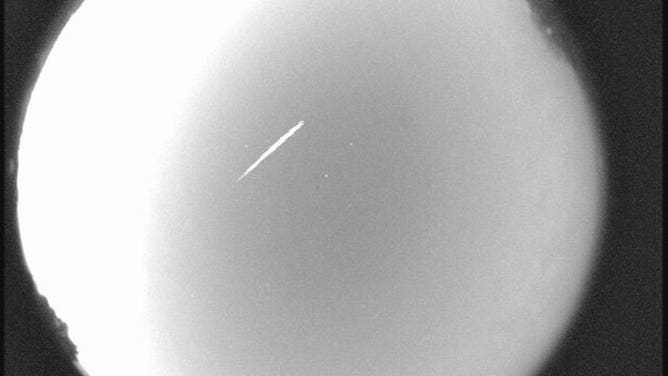Eta Aquarids meteor shower peaks in May: When and where to see it
The Eta Aquarids meteor shower could put on a good show for the peak on May 5 with the Moon being just a sliver in the sky. The meteor shower peaks every year in May as Earth passes through the debris cloud of comet 1P Halley.
Meteor showers explained: what to know and how to watch
We call them shooting stars, but it's actually meteors that create dazzling streaks of light across our night sky.
The annual Eta Aquarids meteor shower peaks in early May, and under the right conditions, skygazers can see dozens of meteors an hour.
The Eta Aquarids are active through the end of May, with peak activity happening between May 4 and 5.
Unlike the Lyrid meteor shower in April, which occurred during a nearly full Moon, skygazers will have better conditions for a peak at the Eta Aquarids. On May 5, the Moon will be just a sliver in the sky at 14% full.
According to the American Meteor Society, the best view is from the southern tropics, with meteor rates reaching between 10 and 30 per hour before dawn.
EARTH’S QUASI-MOON ASTEROID KAMO'OALEWA LIKELY BLASTED OUT OF THIS GIANT MOON CRATER
The Eta Aquarids meteor shower puts on a show every May as Earth passes through the debris field of comet 1P Halley. Halley's Comet is only visible to Earth about every 76 years, but the dusty trail in its wake creates the Eta Aquarids meteor shower in May and the Orionid meteor shower in the fall.
Where to look for the Eta Aquarids
The meteor shower is visible in both the Northern and Southern hemispheres during the pre-dawn hours. However, because the radiant — where the meteors appear to come from — is the constellation Aquarius, the Southern Hemisphere typically sees more meteors per hour.
WHAT TO KNOW ABOUT THE 'NEW' STAR COMING TO NIGHT SKY THIS YEAR

An Eta Aquarid meteor streaks over north Georgia on April 29, 2012.
(NASA / NASA)
According to NASA, this is because Aquarius is higher up in the sky in the Southern Hemisphere. For those in the Northern Hemisphere, the meteors appear to skim the horizon.
The Eta Aquarids can shoot across the sky at 44 miles per second, according to NASA.
Find a dark place away from city lights to watch the meteor shower. To improve your viewing experience, give your eyes about 15 minutes to adjust to the dark.
